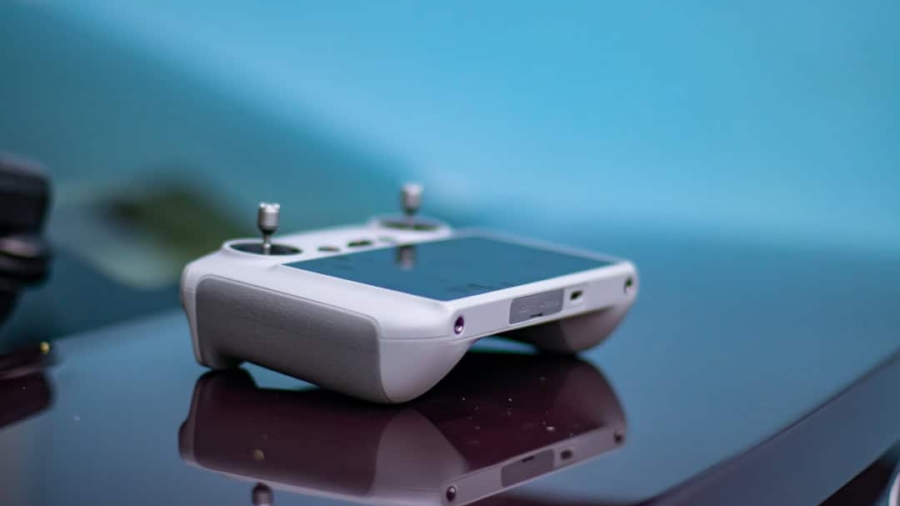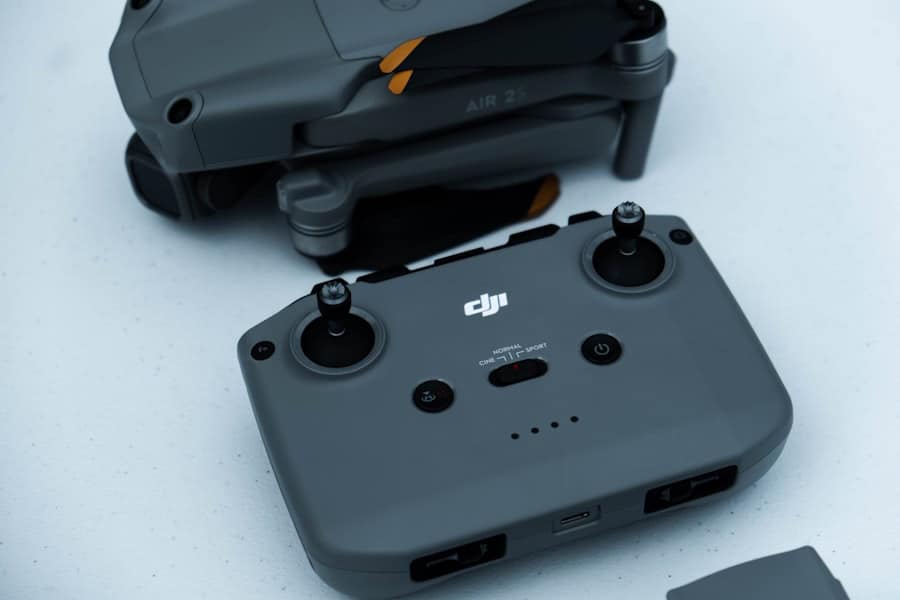Drone technology has rapidly evolved over the past decade, transforming from a niche hobby into a multifaceted tool utilized across various industries. Initially developed for military applications, drones have found their way into commercial sectors such as agriculture, real estate, filmmaking, and even emergency services. The versatility of drones is largely attributed to their ability to capture high-resolution imagery, conduct surveillance, and perform tasks that would be challenging or dangerous for humans.
As the technology continues to advance, the potential applications seem limitless, with innovations in artificial intelligence and machine learning further enhancing their capabilities. The increasing accessibility of drones has led to a surge in their popularity among enthusiasts and professionals alike. With user-friendly interfaces and affordable models available on the market, individuals can now easily operate drones for personal enjoyment or business purposes.
However, this rapid proliferation raises important questions about safety and regulation. As more people take to the skies with their unmanned aerial vehicles (UAVs), understanding the implications of drone technology becomes crucial. This article delves into the safety concerns associated with new users, the enhanced safety features integrated into modern drones, and the importance of training and education for responsible operation.
Key Takeaways
- Drone technology has advanced rapidly in recent years, making them more accessible to new users.
- New users should be aware of safety concerns when operating drones, including potential collisions and geofencing restrictions.
- Enhanced safety features in drone technology, such as collision avoidance systems and geofencing technology, help mitigate potential risks.
- Emergency landing features are an important safety measure in drone technology, allowing users to safely land the drone in case of an emergency.
- Training and education for new users are crucial in ensuring safe and responsible drone operation, including understanding the enhanced camera and imaging systems.
Safety Concerns for New Users
As drone technology becomes more accessible, new users often overlook critical safety considerations that can lead to accidents or violations of regulations. One of the primary concerns is the lack of understanding regarding airspace regulations. Many novice pilots may not be aware of restricted zones, such as near airports or military installations, where flying a drone is prohibited.
Ignorance of these rules can result in serious legal consequences and pose risks to manned aircraft. Furthermore, new users may underestimate the potential hazards posed by their drones to people, property, and wildlife. A drone malfunction or pilot error can lead to crashes that cause injury or damage.
Another significant safety concern is the technical proficiency required to operate drones effectively. While many consumer drones come equipped with automated features, they still require a basic understanding of flight principles and operational controls. New users may struggle with managing drone stability in adverse weather conditions or navigating complex environments.
This lack of experience can lead to accidents that not only endanger the operator but also those nearby. Additionally, the psychological aspect of flying a drone should not be overlooked; new users may experience anxiety or overconfidence that can impair their decision-making abilities during flight.
Enhanced Safety Features in Drone Technology
In response to the growing safety concerns surrounding drone operation, manufacturers have integrated a variety of enhanced safety features into modern UAVs. These advancements aim to mitigate risks associated with flying and provide users with greater control over their devices. One notable feature is the inclusion of GPS-based navigation systems that allow drones to maintain stable flight paths and return to their launch points if they lose connection with the controller.
This “return-to-home” functionality is particularly beneficial for new users who may not yet be adept at manual piloting. Moreover, many contemporary drones are equipped with advanced sensors that monitor environmental conditions and detect obstacles in real-time. These sensors enable drones to autonomously adjust their flight paths to avoid collisions, significantly reducing the likelihood of accidents.
The integration of these safety features not only enhances user confidence but also promotes responsible flying practices among new operators. As technology continues to advance, it is expected that manufacturers will develop even more sophisticated safety mechanisms that further protect both users and bystanders.
Collision Avoidance Systems
Collision avoidance systems represent one of the most significant advancements in drone safety technology. These systems utilize a combination of cameras, ultrasonic sensors, and LiDAR (Light Detection and Ranging) technology to create a three-dimensional map of the drone’s surroundings. By continuously scanning for obstacles, these systems can detect potential collisions before they occur and automatically adjust the drone’s flight path accordingly.
This capability is particularly valuable in urban environments where buildings, trees, and other structures can pose significant hazards. For instance, DJI’s AirSense technology is designed to enhance situational awareness by providing real-time alerts about nearby manned aircraft. This feature is especially crucial for new users who may not yet have a comprehensive understanding of air traffic dynamics.
By receiving alerts about approaching aircraft, operators can take proactive measures to avoid potential collisions. The implementation of collision avoidance systems not only enhances safety for drone operators but also contributes to the overall safety of airspace by reducing the risk of mid-air incidents.
Geofencing Technology
Geofencing technology has emerged as a vital tool in ensuring safe drone operation by creating virtual boundaries that restrict where drones can fly. This feature utilizes GPS coordinates to define specific areas where drone flights are either permitted or prohibited.
When a drone approaches these restricted zones, the geofencing system automatically prevents it from entering or allows it only limited access. This technology serves as an essential safeguard for new users who may not be fully aware of airspace regulations or local laws governing drone use. By incorporating geofencing into their devices, manufacturers help mitigate the risk of accidental violations that could lead to legal repercussions or dangerous situations.
Additionally, geofencing can be customized for specific applications; for instance, agricultural drones can be programmed to operate only within designated fields, ensuring compliance with land use regulations while maximizing operational efficiency.
Emergency Landing Features
Automatic Landing Capabilities
These features are particularly crucial for new users who may lack experience in handling emergencies during flight. Many drones are equipped with automatic landing capabilities that activate when battery levels drop below a certain threshold or when a loss of signal occurs between the drone and its controller.
Practical Applications
In practical terms, this means that if a drone’s battery is running low while flying over a populated area or sensitive environment, it will autonomously descend and land safely rather than risk crashing due to power failure. Some advanced models even allow users to designate safe landing zones before takeoff, ensuring that in an emergency situation, the drone will prioritize landing in a pre-approved area away from people and property.
Enhanced Safety and Confidence
This feature not only enhances safety but also instills confidence in new users who may feel apprehensive about managing their drones during unexpected situations.
Enhanced Camera and Imaging Systems
The evolution of camera and imaging systems in drones has significantly impacted various industries by providing high-quality aerial imagery and data collection capabilities. Modern drones are often equipped with advanced cameras capable of capturing 4K video and high-resolution still images, making them invaluable tools for photographers, filmmakers, and surveyors alike. The integration of gimbal stabilization technology further enhances image quality by minimizing vibrations during flight, allowing for smooth video footage even in challenging conditions.
In addition to traditional imaging capabilities, some drones now feature thermal imaging systems that enable users to detect heat signatures from objects on the ground. This technology has proven particularly useful in search and rescue operations, wildlife monitoring, and agricultural assessments where temperature variations can indicate issues such as crop health or lost individuals in remote areas. The ability to capture diverse types of data from various perspectives has revolutionized how industries approach tasks ranging from land surveying to disaster response.
Training and Education for New Users
As drone technology continues to proliferate, the importance of training and education for new users cannot be overstated. Many organizations and manufacturers have recognized this need and have begun offering comprehensive training programs designed to equip novice pilots with essential skills and knowledge. These programs often cover topics such as airspace regulations, safe flying practices, maintenance procedures, and emergency response strategies.
In addition to formal training programs, online resources such as tutorials and forums provide valuable information for new users seeking guidance on operating their drones safely and effectively. Engaging with experienced pilots through community platforms can also foster a culture of shared knowledge and best practices within the drone community. By prioritizing education and training, new users can develop a solid foundation in drone operation that not only enhances their flying experience but also contributes to safer skies for everyone involved in this rapidly evolving field.
If you are interested in exploring cutting-edge technology like drones, you may also want to check out the article Unlock a New World of Possibilities with Samsung Galaxy Z Fold4. This article discusses the innovative features of the Samsung Galaxy Z Fold4 and how it can revolutionize the way we use smartphones. Just like drone technology enhances safety features for new users, the Samsung Galaxy Z Fold4 offers a unique and immersive experience for tech enthusiasts.
FAQs
What is drone technology?
Drone technology refers to the use of unmanned aerial vehicles (UAVs) for various purposes such as aerial photography, surveillance, and delivery.
How does drone technology enhance safety features for new users?
Drone technology enhances safety features for new users through the use of obstacle avoidance systems, GPS tracking, and automated flight modes to prevent collisions and ensure safe operation.
What are some safety features that drone technology offers to new users?
Some safety features that drone technology offers to new users include geofencing to restrict flight in certain areas, return-to-home functions, and altitude limits to prevent flying too high.
How does drone technology help in preventing accidents and mishaps?
Drone technology helps in preventing accidents and mishaps by providing real-time feedback on battery levels, signal strength, and potential hazards in the surrounding environment.
What are some best practices for new users to ensure safe drone operation?
Some best practices for new users to ensure safe drone operation include familiarizing themselves with local regulations, conducting pre-flight checks, and practicing in open areas away from obstacles.



